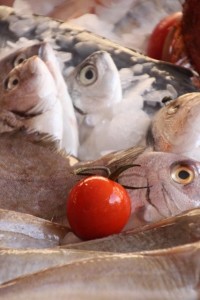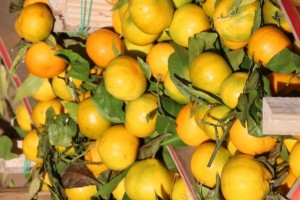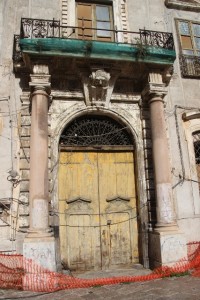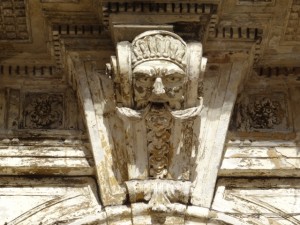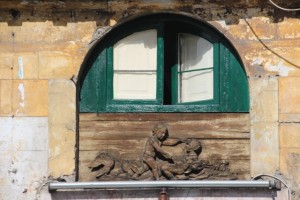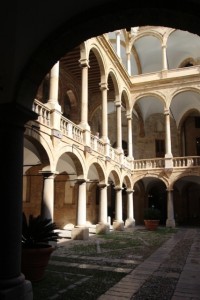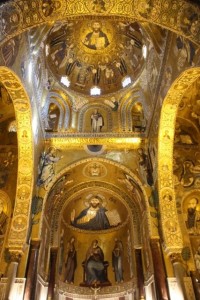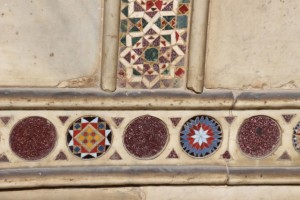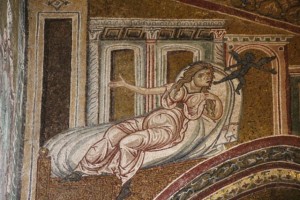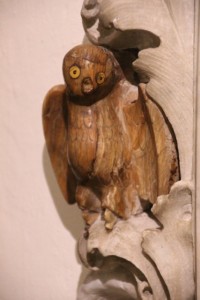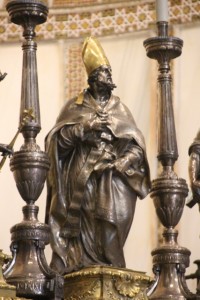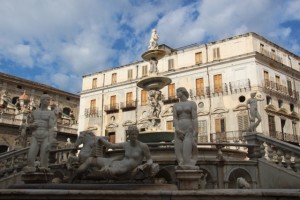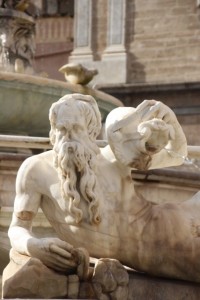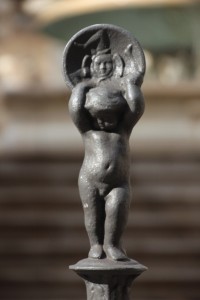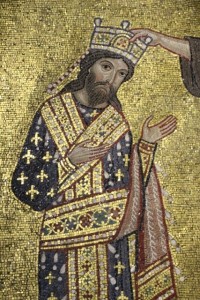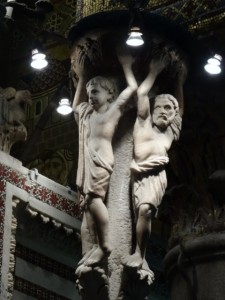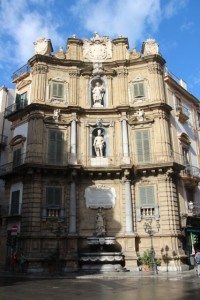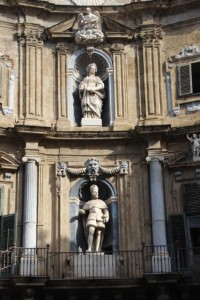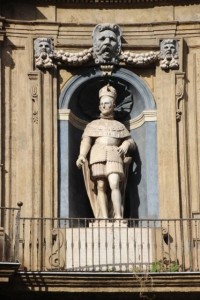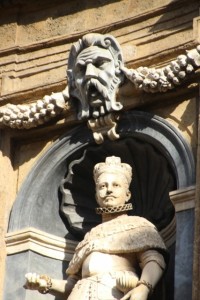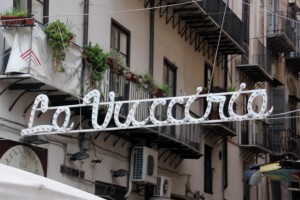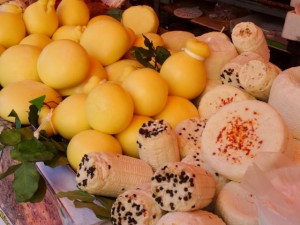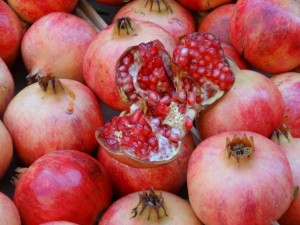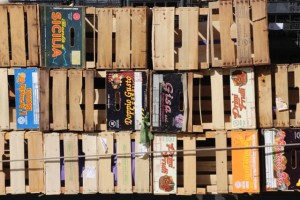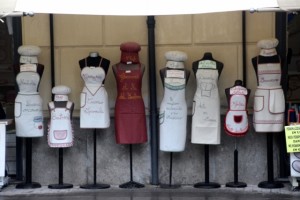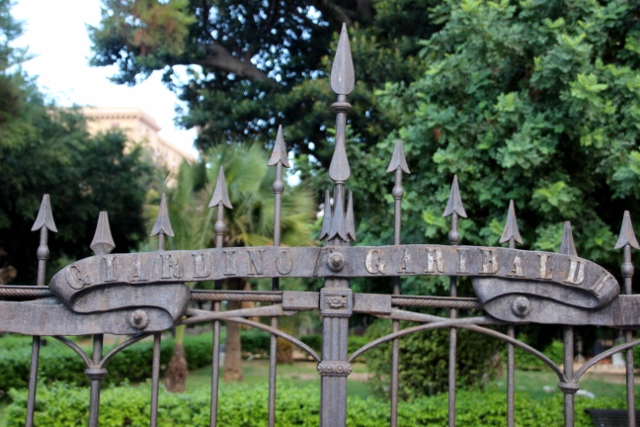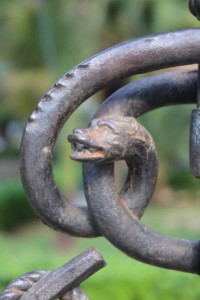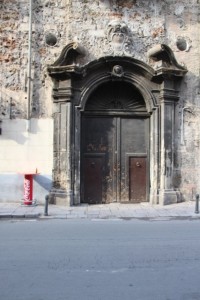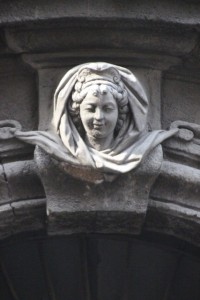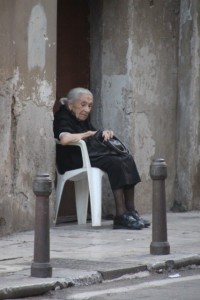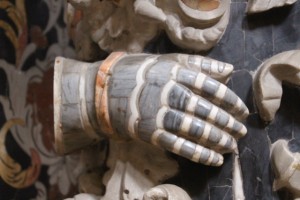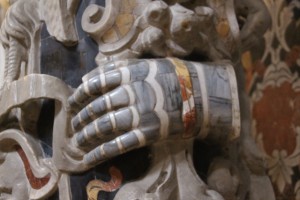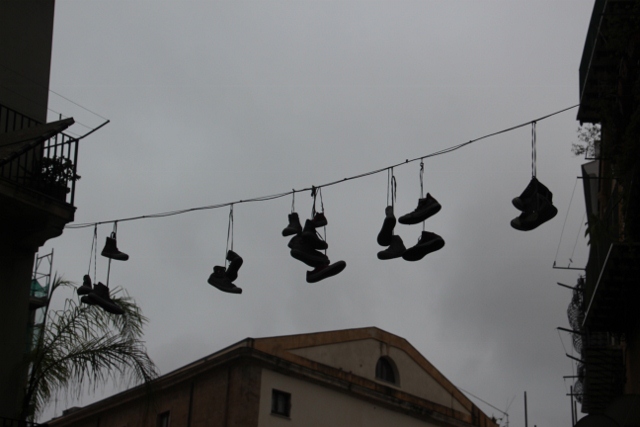After the Roman Empire collapse, there was nothing, for a while. Sicily was occupied by the Vandals – there is no people with a more fabulous name -, and then by Byzantine and Arab invaders. Especially the Arabs were influential, introducing not only Arabic as a common language, but also putting in place land reforms, and bringing in new crops, like the citrus fruits.
But the next phase of significant construction came from the Normans, who took the island in the 11th Century. The Normans, great fighters, and by extension great builders of imposing castles, hung on to their property for a little over 100 years, enough to leave a legacy not only of castles, but also of some of the most splendidly mosaic-decorated churches I have ever seen. Two of those are in Palermo, Sicily’s capital city.
In the city centre is the huge Norman Palace, still in use by the Sicilian parliament. Most of the palace is off limits, but on the first floor, accessed through a columned courtyard, is the fabulous Cappella Palatina. A rich collection of Bible scenes, as well as local 12th Century dignitaries, have been depicted inside the chapel, in delicate mosaics, using bright colours as well as silver and gold, turning the whole into a magnificent example of 800 year old Arab-Greek craftsmanship. In addition, intricately laid marble floors support granite and marble pillars that reach to the ceiling of carved and painted Lebanese cedar wood. You don’t know where to look, inside, every time again you find another gorgeous detail you hadn’t noticed before. Impossible to represent in just a couple of photos.
An even more impressive example of Norman architecture, an even more impressive church, can be found just outside the city, in the village of Monreale, where one of the last Norman rulers decided to build a cathedral even more splendid than all the other Norman churches in Sicily – those build by his forbears. This is what one did, already in those days, a great example of one-upmanship. Once again, a most splendid interior of mosaic-ed Biblical scenes – somebody calculated over 6400 m2 (!!) -, which thanks to the larger windows is even brighter than the mosaic in the Cappella Palatina. In addition to this, further variation is provided by separate chapels that contains the most exquisite marbled floors and stuccoed chapel walls, as well wood carvings (possibly of a later date). Once more, photos alone do no justice.
Of course, Palermo has much more to offer. Just wandering through the city centre brings you to the a whole range of large and small monuments, some well-known and described in the guide books, some just little pearls tucked away in a corner, and considered too insignificant to mention – yet, equally stunning. And precisely this aspect, the ever-present unexpected, makes Palermo, and so many other Sicilian towns, such fun to discover. Fountains, gardens, markets, or just the narrow streets and the balconied houses of the Palermians, invariably with laundry, whether it rains or not. A street with six or seven shops only selling hats, or a tailor, somewhere else, specialised in kitchen outfits. Four Spanish kings survey the main intersection in the centre of town, the Quattro Canti. Another four bustes look down from the Porta Nuova. The austere Arab-Norman style Cataldo Church stands next to the ornate, expressive Baroque-decorated La Martorana, another church with several fabulous remaining Byzantine mosaics. There is so much to see, much more than we covered in our two last days of our trip.
Next is the last entry on Sicily, on the South-East of the island.
